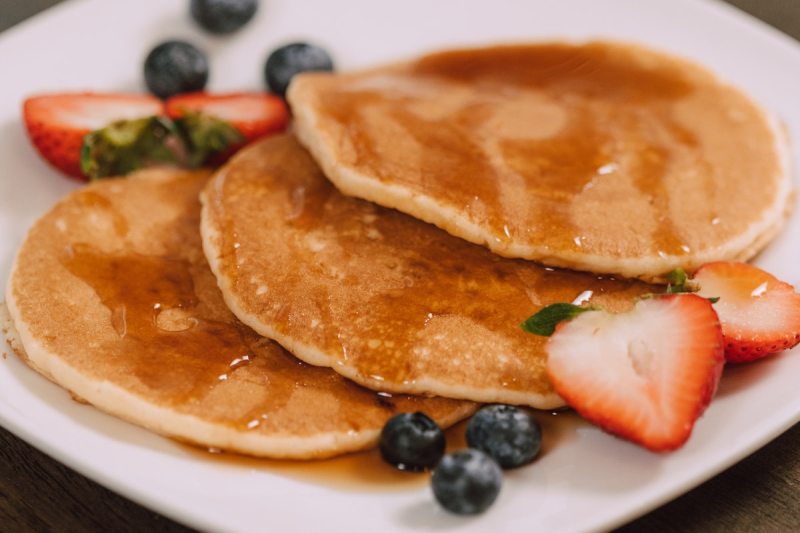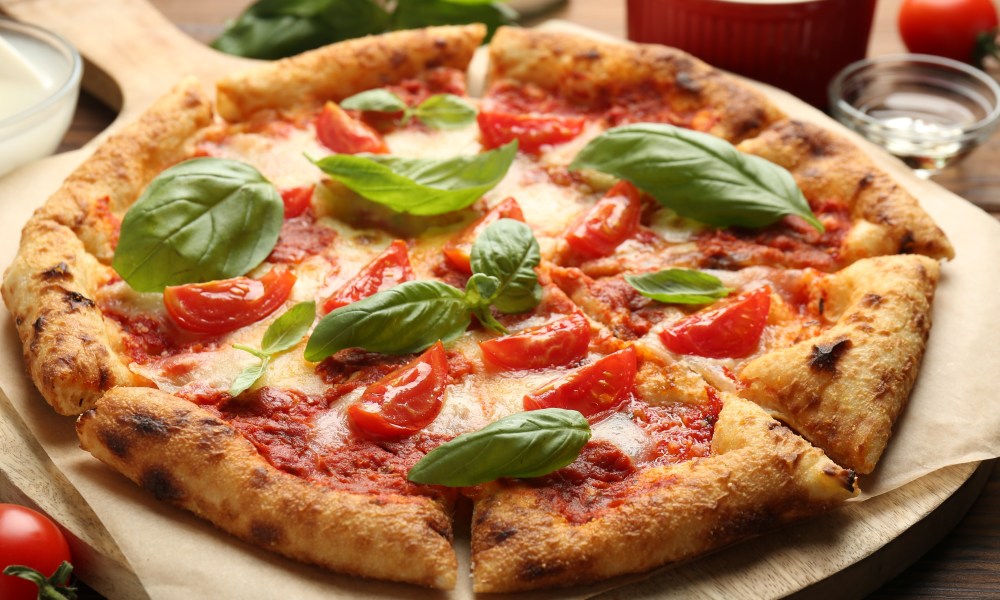Whether you are trying to lose weight or build muscle, it can be difficult to stick to your diet 100% of the time. As a trainer and nutritionist, I have had numerous clients ask me if cheat meals are allowed with following a program or if they should avoid them altogether. It can really depend on the person whether cheat meals will get them off track.
Luckily, everyone can enjoy healthy cheat meals every once in a while with no harm done to their progress. Keep reading for guidance on formulating your own healthy cheat meals and ideas I have shared with clients in the past.
What is a cheat meal?

A cheat meal is a planned indulgence in your diet that allows you to enjoy foods you would otherwise avoid when following a structured eating plan. It can serve as a motivational tool, as well as a way to satisfy your cravings in a controlled manner.
Cheat meals can include anything from pizza and burgers to desserts and sugary treats. The foods you regularly eat in your diet plan may determine what your cheat meals consist of, as they are typically the foods you miss the most. Cheat meals can be homemade or involve going out to eat.
While these meals do provide a mental break from strict dieting, they should be eaten in moderation to avoid negatively impacting progress. Going overboard will hurt rather than help you.
Is it better to have a cheat meal or a cheat day?

When it comes to indulgence, the debate between cheat meals and cheat days often arises. While a cheat meal allows for controlled enjoyment of a favorite food while keeping the rest of the day on track, it may not feel like enough for some people.
On the other hand, a cheat day opens the door to multiple indulgences, which might lead to overeating or feeling sluggish. However, if you aren’t a fan of tracking, having one day a week of no tracking may ensure your adherence for the rest of the week because it is a nice break.
The better option depends on your goals and discipline, but cheat meals are typically recommended as they’re easier to manage and less likely to adversely impact your progress.
How often should you have a cheat meal?

While cheat meals can have benefits, practicing moderation is still important. For most people, having one cheat meal per week is reasonable. Some may be able to get away with two, depending on certain factors. These frequencies allow you to enjoy indulgent foods without derailing your progress.
It’s important to plan cheat meals mindfully, ensuring they don’t turn into cheat days if that isn’t the intention. Focus on enjoying your favorite treats without overindulging, and be sure to return to your healthy eating habits afterward. Cheat meals should complement your routine, not sabotage it.
How many calories should a cheat meal be?

How many calories your cheat meal is usually depends on your daily calorie intake. For the average person, a cheat meal will be around 500 to 1,000 calories. Again, this can depend on things like your goals and activity level.
Going too far beyond your maintenance calories can derail progress. A cheat meal should satisfy your cravings without compromising your overall diet. Choose foods you enjoy, but balance portions and avoid excessive fats or sugars. Planning your cheat meal on a high-activity day can help minimize its impact. Remember, consistency matters most, and one cheat meal won’t ruin your hard work.
9 healthy cheat meals that still support your goals

1. Whole-grain veggie pizza
Swap regular crust for whole-grain or cauliflower crust and top it with veggies like bell peppers, spinach, and mushrooms. Use light mozzarella or plant-based cheese to cut calories. This cheat meal satisfies pizza cravings while providing fiber, nutrients, and a healthier twist that keeps you aligned with your goals.
2. Turkey or chicken burger with sweet potato fries
Choose a lean turkey or chicken burger on a whole-grain bun, topped with fresh vegetables like lettuce, tomato, and avocado. Pair it with baked sweet potato fries seasoned with olive oil and spices. This combination is high in protein and complex carbs, making it a satisfying yet goal-friendly indulgence.
3. Dark chocolate and nut butter toast
Top whole-grain toast with natural nut butter and a drizzle of dark chocolate. This cheat meal delivers healthy fats, antioxidants, and fiber while satisfying sweet cravings. It’s a simple, nutrient-packed snack that feels indulgent but keeps you on track with your health and fitness journey.
4. Homemade baked chicken wings
Bake chicken wings instead of frying, seasoning them with low-sugar barbecue or hot sauce. Making them yourself rather than ordering out gives you control over ingredients and calories. Serve with celery sticks and a yogurt-based dip for a balanced, protein-rich cheat meal.
5. Sushi rolls with brown rice
Choose sushi rolls made with brown rice, lean protein like tuna or salmon, and fresh ingredients such as cucumber and avocado. Skip heavy sauces and fried options to keep it light. This meal is rich in omega-3s and fiber, offering a satisfying treat that supports your health and fitness goals.
6. Greek yogurt parfait
Layer Greek yogurt with fresh berries and a small sprinkle of granola. A protein-packed parfait can provide probiotics, antioxidants, and natural sweetness without excessive added sugars. It’s a healthy dessert alternative that satisfies cravings while fueling your body with nutrients to maintain energy and recovery.
7. Protein-packed pancakes
Make your own pancakes using oat or whole-grain flour, and add protein powder to support your muscle-building goals. Top with fresh fruit, a spoonful of Greek yogurt, or a light drizzle of maple syrup.
8. Loaded baked potato
Top a baked potato with lean ground turkey, low-fat cheese, and Greek yogurt instead of sour cream. Add steamed broccoli or other vegetables for extra nutrients. This hearty meal feels indulgent but provides a good balance of protein, carbs, and fiber, helping you stay on track with portion control.
9. Frozen banana “nice cream”
For an ice cream alternative, blend frozen bananas with a splash of almond milk and vanilla extract. Add dark chocolate chips or a sprinkle of nuts for texture. This sweet, nutrient-rich treat satisfies ice cream cravings while providing natural sugars and potassium to support your overall health and fitness goals.
Who should avoid cheat meals?

According to Northwestern Medicine, “Research shows that after a cheat meal, the body increases its metabolism, causing you to burn calories faster.” However, cheat meals still aren’t for everyone, especially those with certain health conditions or eating patterns.
If you struggle with an eating disorder or have in the past, cheat meals may trigger unhealthy behaviors, such as binge eating or feelings of guilt. Also, people managing diabetes, high blood pressure, or other chronic conditions should avoid cheat meals that derail their progress.
Additionally, individuals with an all-or-nothing mindset might find cheat meals disrupt their consistency and motivation. Instead of focusing on cheat meals, these individuals may benefit from flexible eating plans that incorporate occasional indulgences within their overall nutritional goals to maintain balance.
Frequently asked questions

What happens if I eat 4,000 calories on a cheat day?
Eating 4,000 calories on a cheat day may lead to temporary weight gain from water retention and glycogen storage, especially if it exceeds your daily caloric needs. While one cheat day won’t cause significant fat gain, frequent overeating can hinder progress. Balance indulgences with overall consistency to achieve your goals.
What is the 90/10 cheat meal rule?
The 90/10 cheat meal rule encourages eating nutrient-dense, healthy foods 90% of the time while allowing indulgent foods 10% of the time. This balance helps maintain consistency without feeling overly restricted, promotes sustainable eating habits, and allows occasional treats without derailing overall health and fitness goals.




